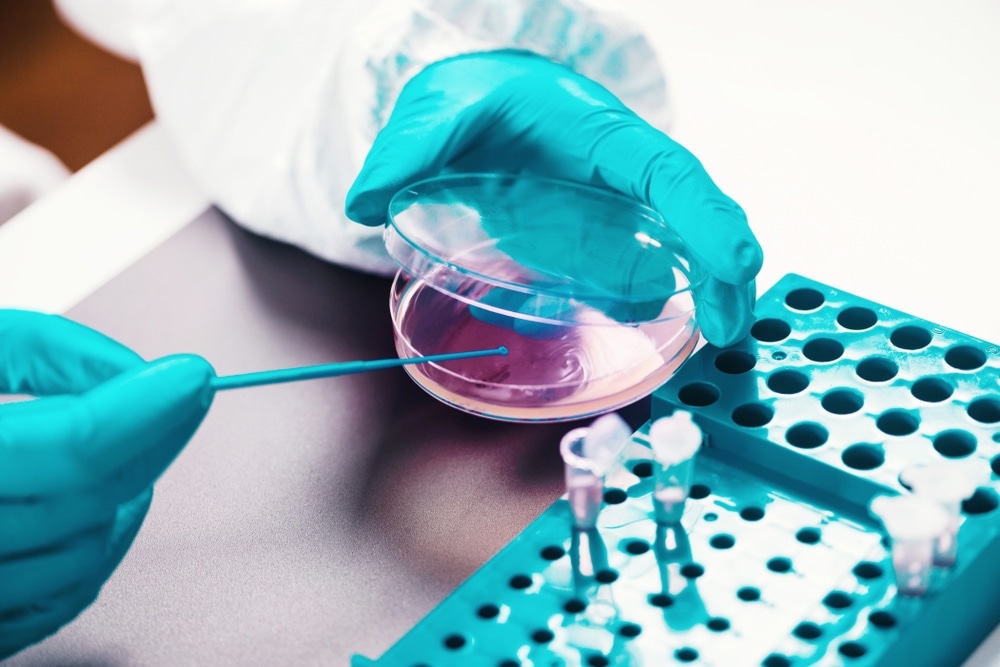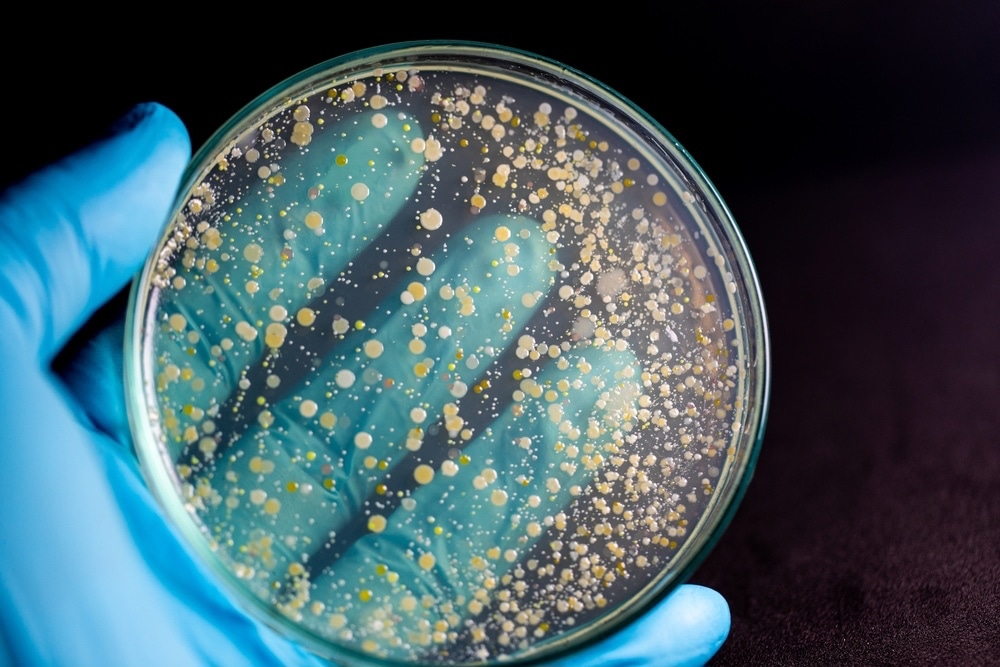Learn about the fundamentals of microbial isolation in our complete guide to microbial isolation techniques.

Image Credit: Microgen/Shutterstock.com
Introduction to Microbial Isolation
Microbial isolation is a critical component in microbiology, essential for unraveling the intricacies of the largely uncharted microbial world. This process, fundamental in its nature, involves extracting a single type of microorganism from a mixed culture. This separation is crucial as it allows for a thorough investigation into the unique characteristics of that microorganism.
Such an in-depth analysis only sheds light on the individual properties of the organism and also significantly enhances our overall scientific comprehension. The ability to isolate and study microorganisms in such detail is vital for advancing our understanding of microbial roles and interactions in various environments.
The progression of microbial isolation techniques mirrors the broader evolution of microbiology. Initially, the field relied heavily on basic, manual methods of isolation.
These foundational techniques, while elementary, were instrumental in initiating the exploration and understanding of microbial life. However, as microbiology has grown and developed, so too have its methods for isolating microorganisms.
The field has transitioned from these simplistic beginnings to an era dominated by sophisticated, technology-driven methodologies. Microbiology utilizes many advanced technologies in isolation techniques, marking a significant advancement in the field. This integration of technology has refined the isolation process and also broadened the research scope within microbiology.
Historical Perspective: From Traditional to Modern Isolation Methods
Traditional methods, like streak or pour plating, relied on spreading a sample over a growth medium and allowing individual cells to grow into isolated colonies. These techniques, while effective, often require skilled hands and considerable time. The transition to modern methods has been marked by an emphasis on precision, automation, and the ability to isolate specific microorganisms more efficiently.
Current Isolation Techniques
Streak Plating
Streak plating is a fundamental microbiology technique known for its simplicity and high effectiveness in isolating microbial colonies. The process involves delicately dragging or spreading a microbial sample across the surface of an agar plate using a sterile tool, such as an inoculation loop.
As the sample is streaked, the density of the microorganisms decreases, allowing individual cells to be isolated at the end of the streaking process. This forms distinct colonies, each originating from a single microorganism or a group of the same microorganisms.
Pour Plating
Pour plating is another key technique in microbiology, beneficial for quantitative studies and accommodating the growth of diverse bacterial types. In this method, a diluted microbial sample is mixed with liquefied agar and then poured over the surface of a sterile petri dish. As the agar solidifies, the bacteria are entrapped and begin to grow.
Pour plating is advantageous when counting the number of viable cells in a sample is necessary, as it allows for the development of countable colonies.
It also supports the growth of both aerobic and anaerobic bacteria, making it a versatile choice for various microbiological studies. This method is beneficial in applications where oxygen sensitivity of the microorganisms is a concern, as it provides an environment where surface and subsurface colonies can develop.
Selective Media
Selective media is a strategic approach in microbiological isolation, tailored to encourage the growth of certain microbes while inhibiting others. This is achieved by incorporating specific compounds into the media that selectively suppress the growth of unwanted organisms.
Selective media is essential in isolating particular types of microorganisms from mixed cultures, such as identifying pathogens in clinical samples or isolating bacteria of interest from environmental samples.
These traditional methods of streak plating, pour plating, and the use of selective media have been instrumental in numerous microbiological studies. They have enabled significant advances, such as the isolation and study of antibiotic-producing bacteria, which have been pivotal in developing new antibiotics.

Image Credit: Rattiya Thongdumhyu/Shutterstock.com
Technological Advancements
Integrating advanced technology into microbial isolation techniques marks a significant transformation in the field, offering unprecedented precision and efficiency. Microfluidics, a standout innovation, operates at a microscopic scale to manipulate small volumes of fluids with remarkable accuracy.
This technology is pivotal in isolating and analyzing individual cells, enabling scientists to delve into the minute details of microbial life. Such precision in single-cell isolation opens new windows into the vast diversity and intricate functions of microorganisms, areas that were once elusive due to the limitations of conventional methods.
Automated systems represent another leap forward, drastically reducing human error while significantly increasing the capacity and speed of microbial analysis. This is especially crucial in industrial contexts where high throughput and consistency are paramount.
The advanced nature of these technologies far surpasses traditional methods in several aspects, notably in efficiency and precision. They have broadened the horizons of microbiological research, allowing scientists to explore and understand rare or slow-growing microorganisms, a task that was previously fraught with challenges.
Challenges and Limitations
Despite advancements, challenges persist. Contamination remains a significant concern, particularly in clinical settings where accuracy is paramount. The selectivity of some methods can also be a double-edged sword, as it might exclude important, albeit less dominant, microbial species. Scalability is another issue, especially in industrial applications where large volumes of samples are processed.
Both traditional and modern techniques have limitations. Traditional methods can be labor-intensive and may not always isolate the most clinically or environmentally relevant microbes. Meanwhile, advanced technologies can be cost-prohibitive and require specialized training and equipment.
Future Perspectives
The future landscape of microbial isolation techniques is poised for remarkable advancements, with research intensely focused on developing methods that are more efficient, highly selective, and scalable.
Artificial intelligence and machine learning are likely to have significant impact, automating systems to identify and isolate specific microbes with exceptional precision using sophisticated algorithms, marking a significant advancement in microbiological research and analysis. This technological evolution will minimize human error and significantly enhance the speed and volume of microbial analysis.
Integrating AI and machine learning in microbial isolation represents a groundbreaking shift set to transform both the accuracy and scope of microbiological research and industrial applications.
Conclusion
The evolution of microbial isolation techniques is a testament to the relentless pursuit of knowledge in microbiology. These methods have been and will continue to be, fundamental in understanding microbial life. They are not just tools for scientific inquiry but are also crucial in numerous industrial applications, from pharmaceuticals to food safety.
As these techniques evolve, they promise to unveil even more about the microbial world, pushing the boundaries of our understanding and capability in life sciences.
Sources
Alain, K. & Querellou, J. (2009). Cultivating the uncultured: Limits, advances and future challenges. Extremophiles. 13(4), pp. 583–594. doi.org/10.1007/s00792-009-0261-3
Hanišáková, N., et al. (2022). The Historical Development of Cultivation Techniques for Methanogens and Other Strict Anaerobes and Their Application in Modern Microbiology. Microorganisms, 10, p. 412. doi.org/10.3390/microorganisms10020412
Lagier, J.-C., et al. (2015). The Rebirth of Culture in Microbiology through the Example of Culturomics to Study Human Gut Microbiota. Clinical Microbiology Reviews, 28, pp. 237–264. doi.org/10.1128/CMR.00014-14
Vitorino, L.C. & Bessa L.A. (2017). Technological Microbiology: Development and Applications. Frontiers in Microbiology, 8. Available at: https://www.frontiersin.org/articles/10.3389/fmicb.2017.00827
Buchan, B.W. & Ledeboer, N.A. (2014). Emerging technologies for the clinical microbiology laboratory. Clinical Microbiology Reviews, Oct;27(4), pp. 783-822. doi.org/10.1128/CMR.00003-14
Further Reading
Last Updated: Dec 27, 2023